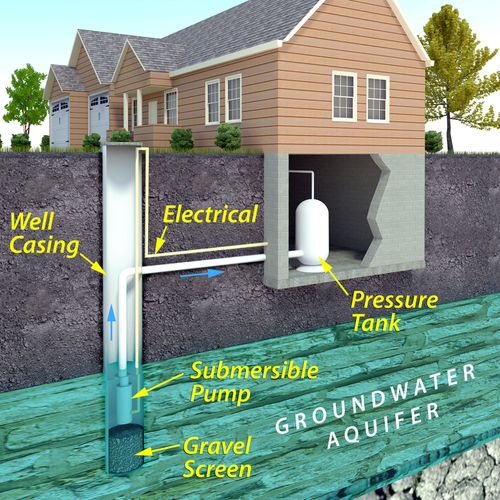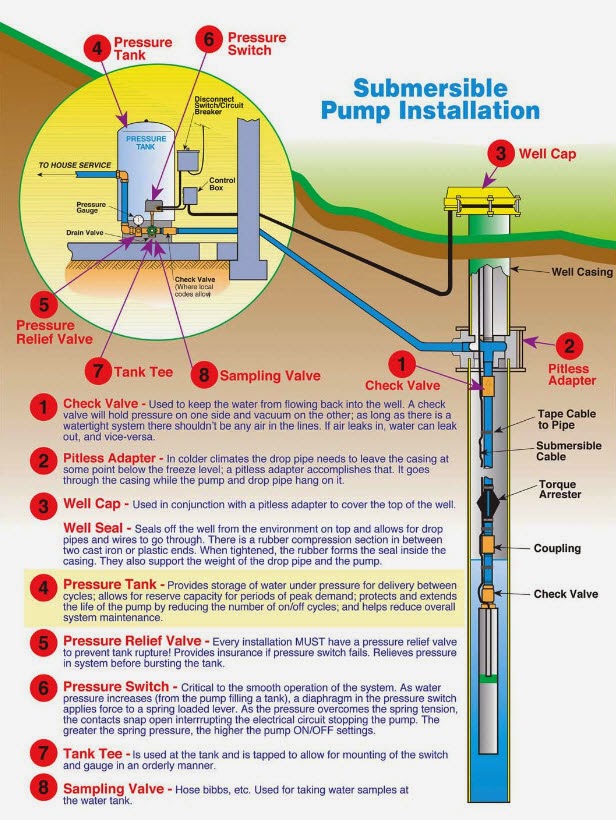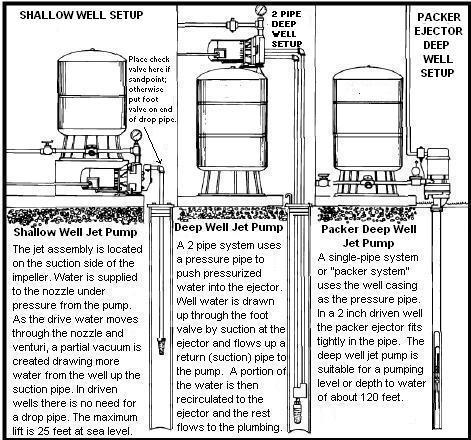Well Inspections
Refinancing water testing (VA)
Water Testing for Pre-sale Inspections
Washtenaw County Time of Sale
The inspector, Todd Arnold of TNT Inspection Services, is Certified through Washtenaw County to perform Well Inspections for Washtenaw County’s Time of Sale Program. We also perform Well Inspections and Water Testing in Livingston County, Oakland County and some parts of Genesee County. A well inspection is one of the “Things you should inspect when purchasing a home”.
Inspecting the Well and it's Components
We inspect the well’s water output and the well equipment, type of well and the location of the well. We provide a diagram with the inspection report showing the well and potential contaminants to the well (Septic systems, underground oil tanks).
There are three types of private drinking water wells.
- Dug wells are holes in the ground dug by shovel or backhoe and are typically lined (cased) with stones, brick, tile, or other material to prevent collapse. Since dug wells are typically shallow (approximately 10 to 30 feet deep) they have the highest contamination risk.
- Driven wells are hammered or hydraulically pushed into the ground and pull water from the water-saturated zone. Driven wells are also shallow (approximately 20 to 30 feet deep) and have a moderate-to-high risk of contamination from nearby land activities.
- Drilled wells are deeper (approximately 100 to 400 feet) and typically have metal or plastic pipe casing which protect the well water from sources of contamination. Drilled wells have a lower risk of contamination. However, no well can be assumed to be contamination-free.
The depth of the well is reviewed. A shallow well does not conform to the minimum depth requirement for government loans (FHA, VA, RD and USDA). The well cycling (how long it takes for the well to fill that pressure tank) plays a role with the pressure tank and the tank size. We provide labels on the equipment and information for you to maintain your equipment for years to come.
The DEQ (Department of Environment Quality) has an “Environmental Mapper” which you can use to locate concerns that are known to the DEQ.
A few quality well drillers are Adams Well Drilling located in Howell and Ray’s Well Drilling ((248) 240-9973) in Rose Township. They can replace your pump or pressure tank to make your well function properly again.



Water Testing
We use Water Tech, (who is a State of Michigan certified lab) for our water testing. There are times when a customer would like a test which may need to be sent to another lab for testing due to the unique testing procedures. We try to accommodate all requests for testing and will make every effort to go beyond your expectations.
Water testing can range from Total Coliform, Nitrates and Arsenic
The requirements for FHA, VA, RD, USDA loans are Total Coliform, E-coil, Nitrate, Nitrite and Lead.
Water Tech has provided detailed information on How to Chlorinate your well. This process should be performed by a qualified professional and special care needs to be taken to prevent damage to the well and the equipment.
This water interpretation tool will help you review and understand your water testing results. Ohio State University has a Well Water Interpretation Tool.
Well owners should regularly examine the area above the ground surface over the well. If any of the following issues are discovered, a professional should be contacted to investigate:
- Casing (pipe protruding from the ground)—Check the general condition and check if the casing extends at least 12 inches above ground.
- Well cap (cap on top of casing)—Check the condition of the cap and any seals, make sure that it is securely attached.
- Electrical conduit (if present)—Visually verify that all connections are secure.
- In a survey of the area around the well:
- Check for potential sources of contamination and physical dangers, and:
- Remove chemicals such as paint, fertilizer, pesticides, or motor oil
- Maintain at least 50 feet between the well and any kennels, pastures, feeding areas, or
- Maintain at least 50 feet between the well and any kennels, pastures, feeding areas, or livestock operations
- Ensure a proper distance is maintained from buildings, waste systems, or chemical storage areas (including fuel tanks)
- Be sure the ground surrounding the wellhead is sloping away from the well to divert surface runoff
- If the well is equipped with a vented well cap, make sure the vent is free of debris and able to keep insects and animals out
- Any growth vegetation with root systems within 10 feet of the well should be physically removed
- If your well is located in a low-lying area prone to flooding, consider having a water well systems professional raise the casing to at least 12 inches above the historic record flood level—or construct a new well outside the flood-prone area.
Well owners also can visually inspect well system components away from the wellhead, again contacting a water well systems professional if any issues are discovered. Note the condition of:
- Any above-ground pumping equipment. Ensure motors are properly cooled and vented (do not close them in and block air flow), check for shaft seal leaks, and rust or other signs of weakened fittings
- Above-ground well system wiring and parts such as pipes, connections, joint seals, gauges, pressure relief valves, and the water meter (if present)
√ Signs of corrosion or breakages
√ Any odor of burned connections or wiring - Above- and below-ground storage tanks
- The electrical control box and connections
- Water softeners and conditioners, and maintain them according to the manufacturer’s instructions
- Filtration equipment. Be sure filters have been maintained and replaced or recharged as required by the manufacturer and the quality of the incoming water.
The following are other indicators of when a water well systems professional should be called to evaluate the condition of your well:
- Anytime the well has to be opened up (cap or well seal removed)
- If you experience taste or odor problems
- If you experience turbidity—cloudiness of water caused by presence of suspended matter
- If there is a loss of capacity or pressure—the well is not producing as much water as before, the pressure drops and surges, or the pump cycles on and off frequently
- If a test is positive for total coliforms, anaerobic bacteria, or any positive test results indicating a potential health concern. Contact a professional or your local or state regulatory agency if you experience any positive test results or believe your well has been contaminated. A water well systems professional should be hired to thoroughly clean and disinfect any well that has had a positive “anaerobic” bacterial test result, which should include removal of pumping equipment and evacuation of the well to its bottom to be sure of maximum removal of anaerobic growth.